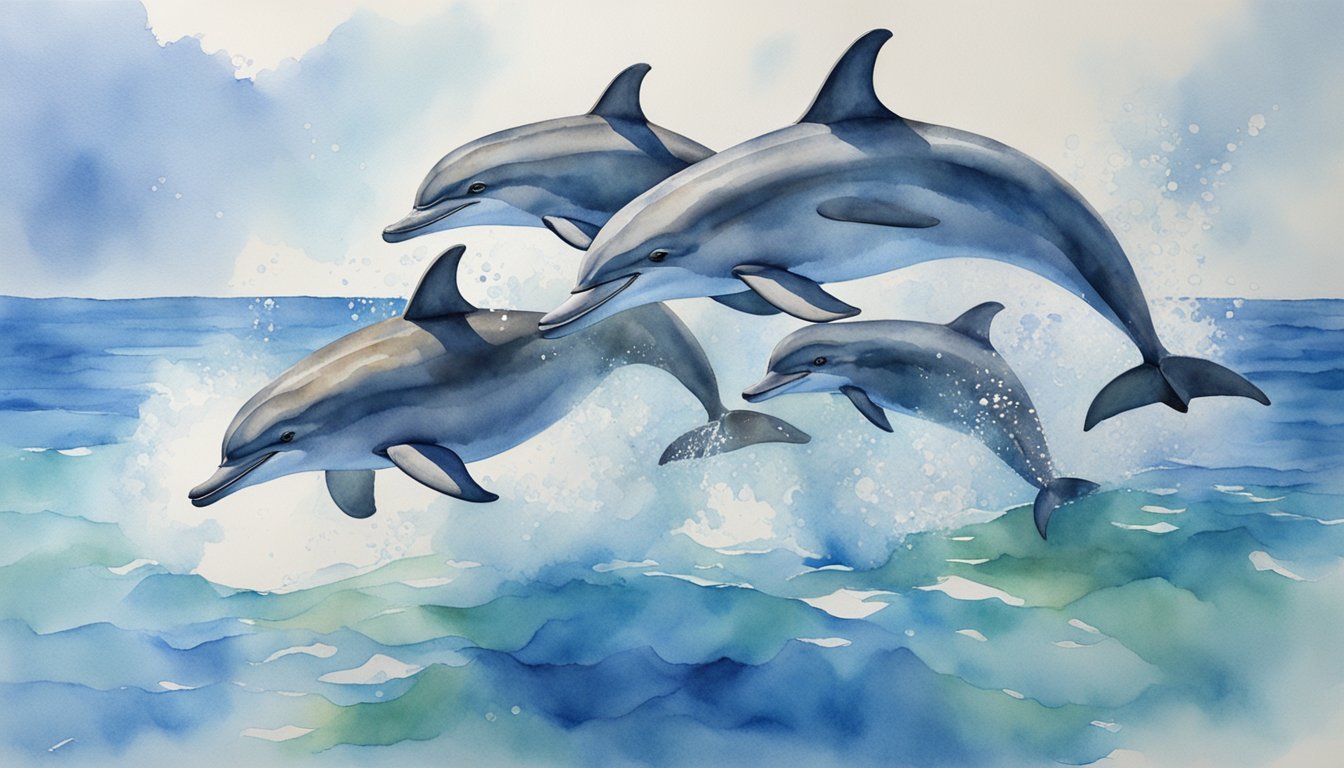Bottlenose Dolphin Characteristics
The bottlenose dolphin is a charismatic marine mammal known for its high intelligence and friendly behavior. This section explores their distinct physical features, species classification, and geographical spread.
Physical Description
Bottlenose dolphins are renowned for their streamlined bodies and pronounced beaks. The average adult measures between 2 to 3.9 meters in length and weighs about 150 to 200 kilograms. They exhibit a gray color, which may vary in shade from the back to the belly, contributing to camouflage in the water. Their dorsal fin, along with the pectoral flippers and tail, play crucial roles in navigation and propulsion.
Species Identification
The genus Tursiops, which is part of the family Delphinidae, consists of several species including the common bottlenose dolphin (Tursiops truncatus) and the Indo-Pacific bottlenose dolphin (Tursiops aduncus). These species are differentiated by subtle variations in appearance such as size, shape, and coloration, which helps researchers identify them in their natural habitats.
Habitats and Distribution
Bottlenose dolphins are found in a wide range of environments across the world, from temperate to tropical waters. They are versatile in their habitats, living in offshore and coastal waters, including harbors, bays, and estuaries. The common name “bottlenose” has become almost synonymous with dolphins due to their extensive distribution and frequent interactions with humans.
Dolphin Behavior and Ecology

Bottlenose dolphins are highly intelligent marine mammals renowned for their complex behaviors and adaptive abilities in diverse marine environments, ranging from tropical to temperate seas.
Feeding Patterns
Bottlenose dolphins have a varied diet, primarily consuming fish, squid, and shrimp. They often hunt together, using sophisticated techniques like echolocation to locate prey and sometimes working in groups to herd fish into tight balls. Their feeding habits can display remarkable instances of cooperation and problem-solving skills.
Social Structure
These dolphins are well-known for their intricate social bonds and have been observed forming social groups called pods, which can vary in size from a few individuals to over a hundred. The composition of these pods is often fluid, allowing dolphins to interact with a large network of peers over time.
Reproduction and Life Cycle
The path to sexual maturity takes time, with females typically breeding by 5 to 12 years and males slightly later. Gestation lasts about 12 months, leading to the birth of a single calf that is nursed for up to two years. The lifespan of bottlenose dolphins can extend beyond 40 years, although this varies based on their habitat and presence of predators, among other factors.
Communication and Intelligence
Bottlenose dolphins are well-documented for their advanced communication skills, using a variety of vocalizations like clicks, whistles, and squeaks. These sounds are not just for echolocation but also for social interactions. Their ability to learn and adapt to new situations underscores their high intelligence and problem-solving abilities.
Conservation Status
Conservation of bottlenose dolphins is imperative, given their role as indicators of ocean health. Classified by the IUCN Red List as “Least Concern,” their populations are, nevertheless, threatened by human activities like fishing, which can lead to bycatch, and habitat degradation from pollution. Conservation efforts under the Marine Mammal Protection Act aim to mitigate these risks and protect dolphin populations, especially in areas like the Gulf of Mexico and bays around Florida and California.

